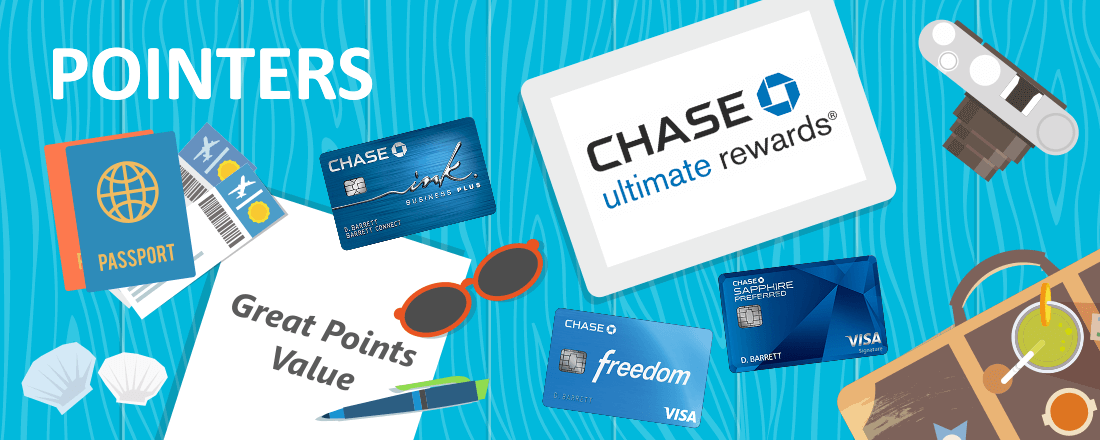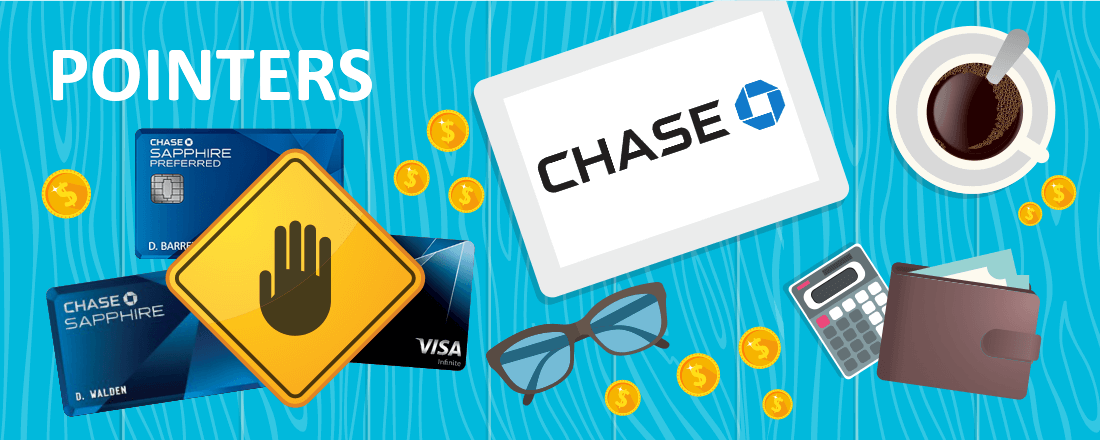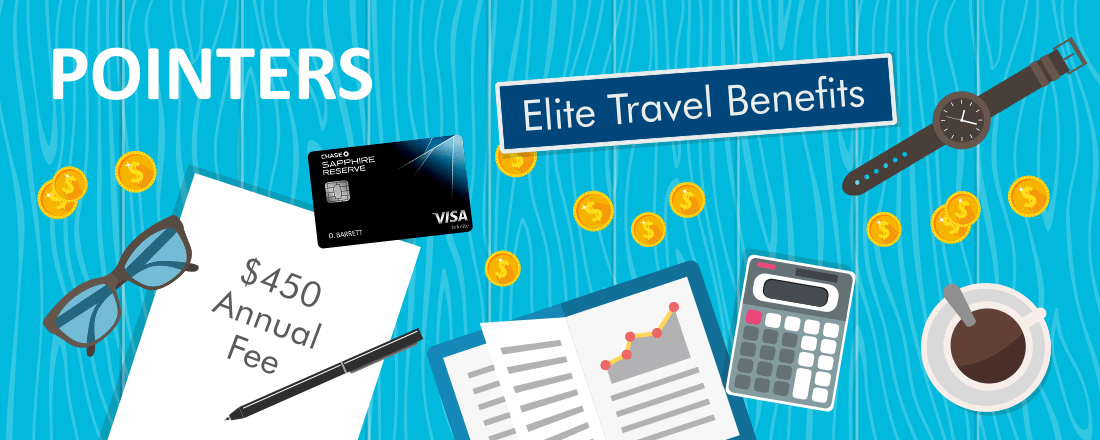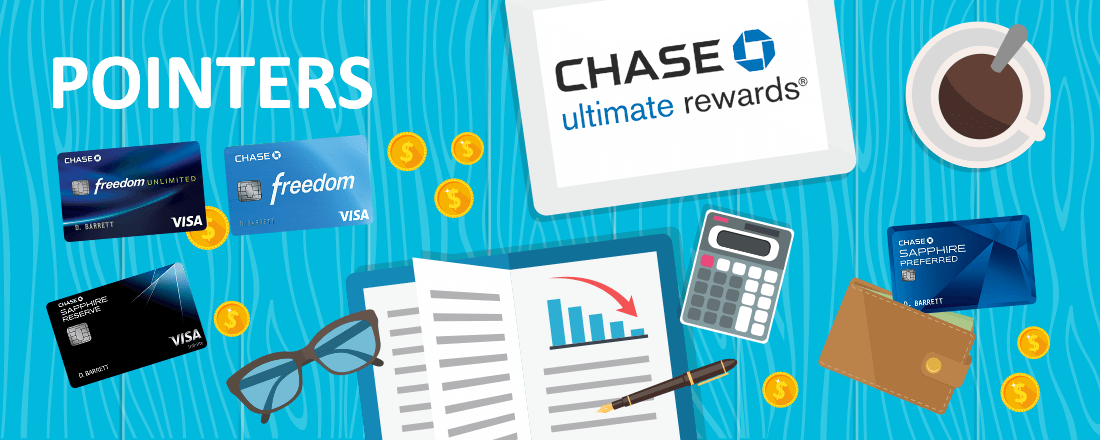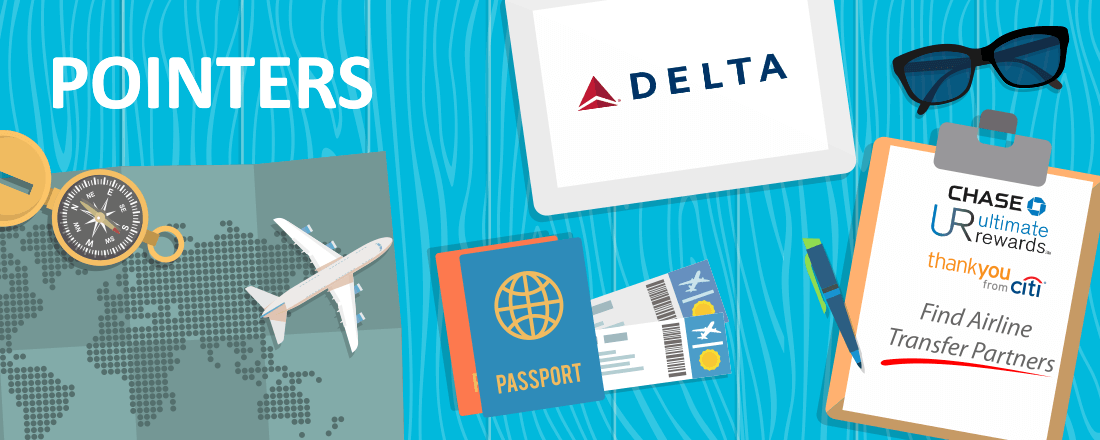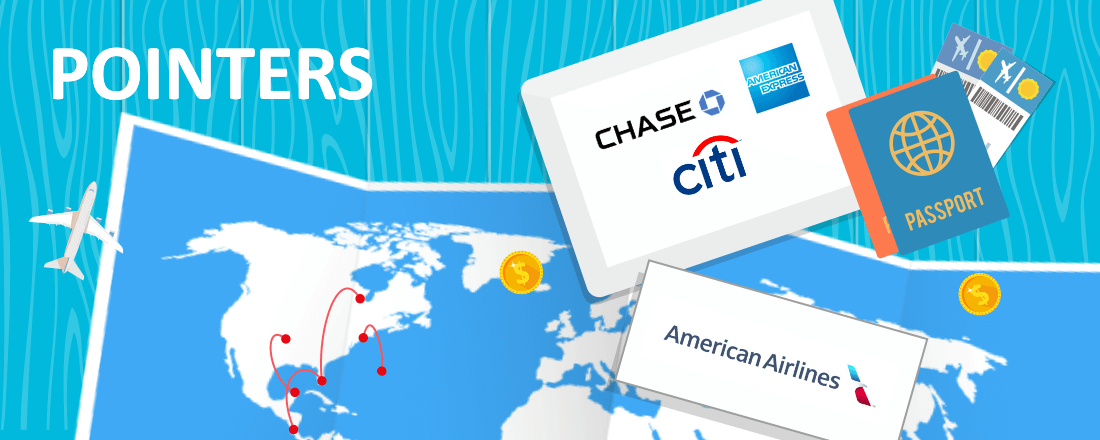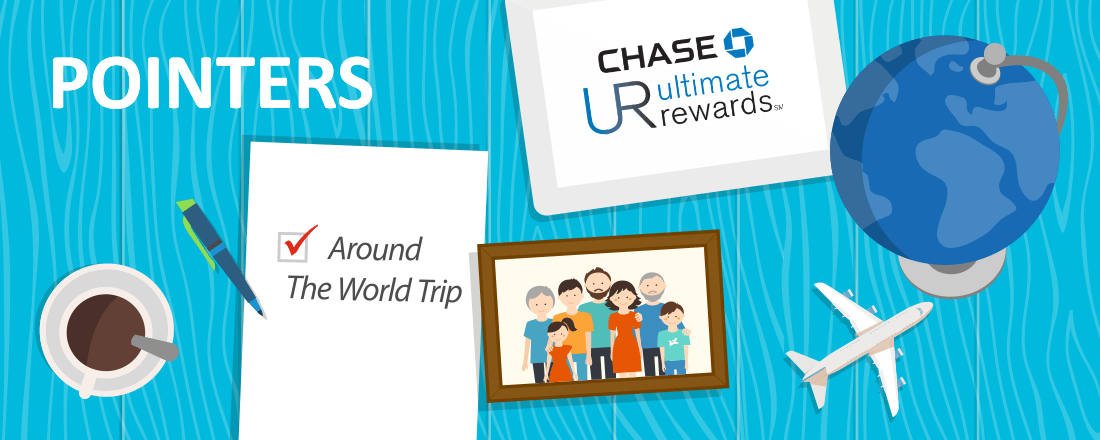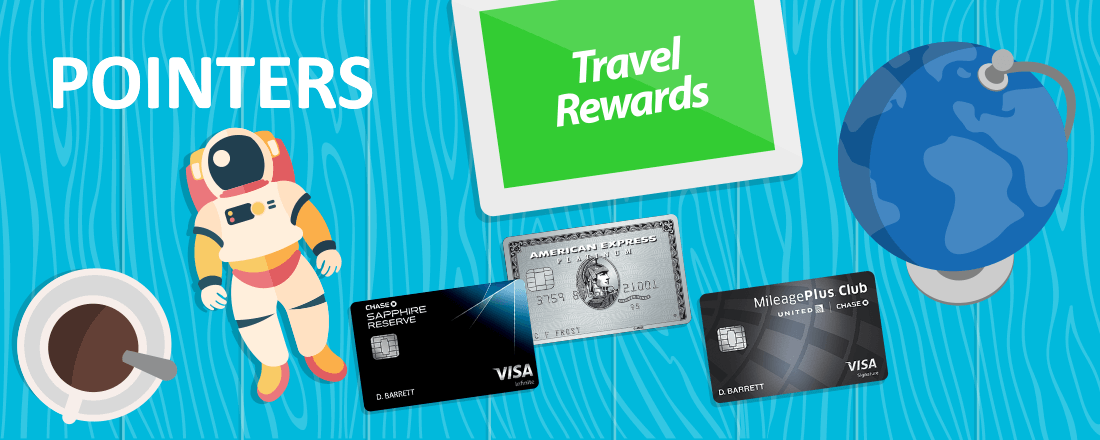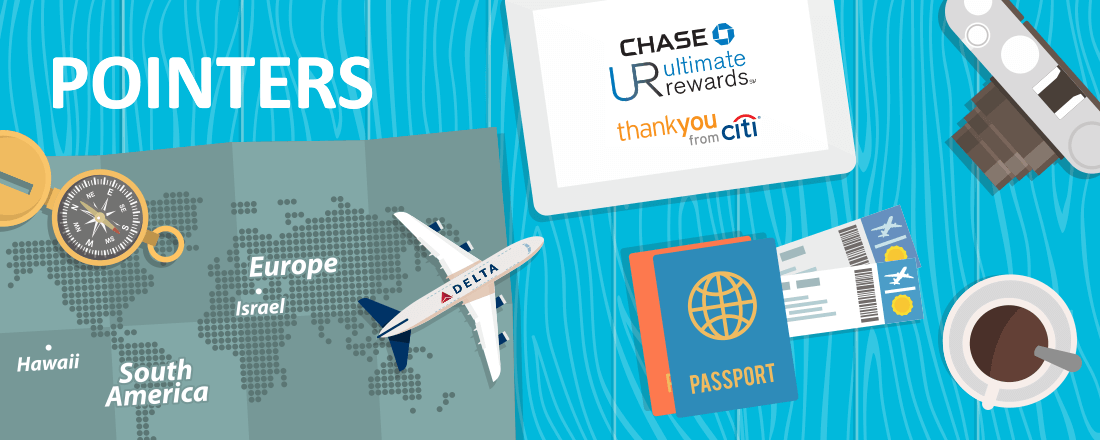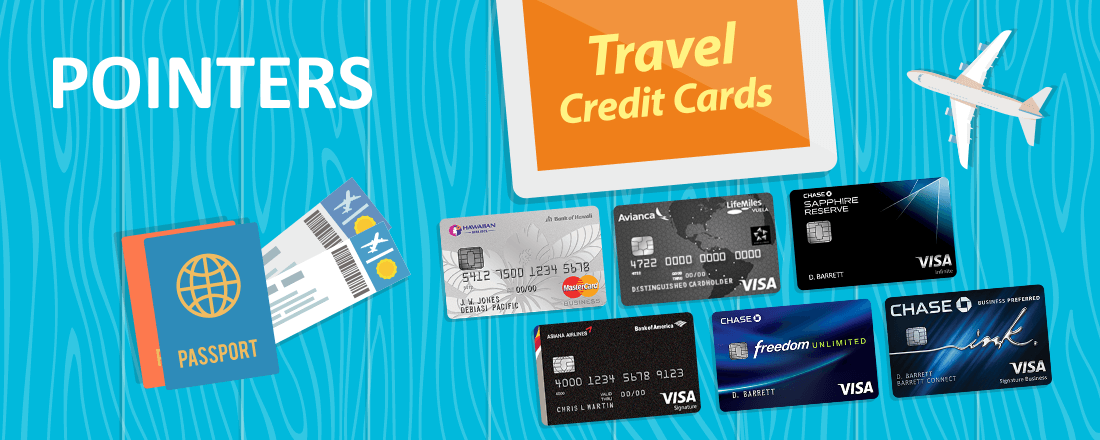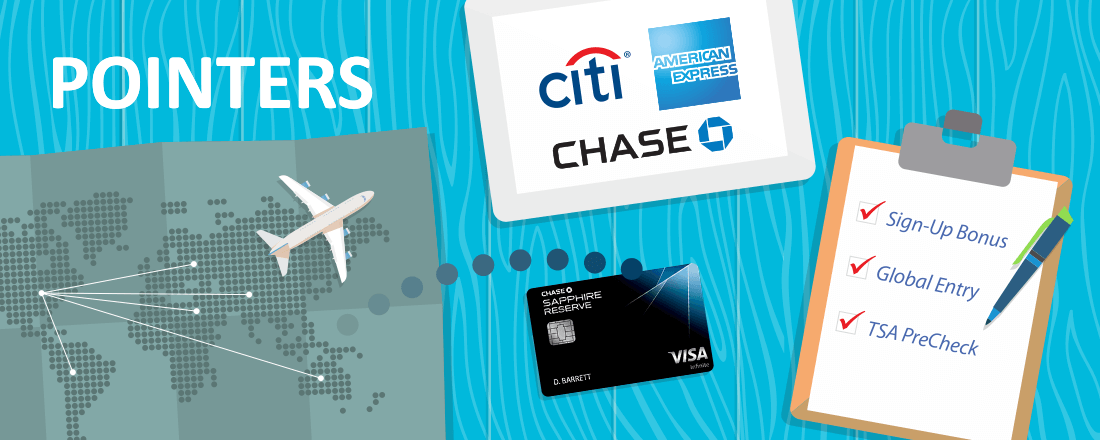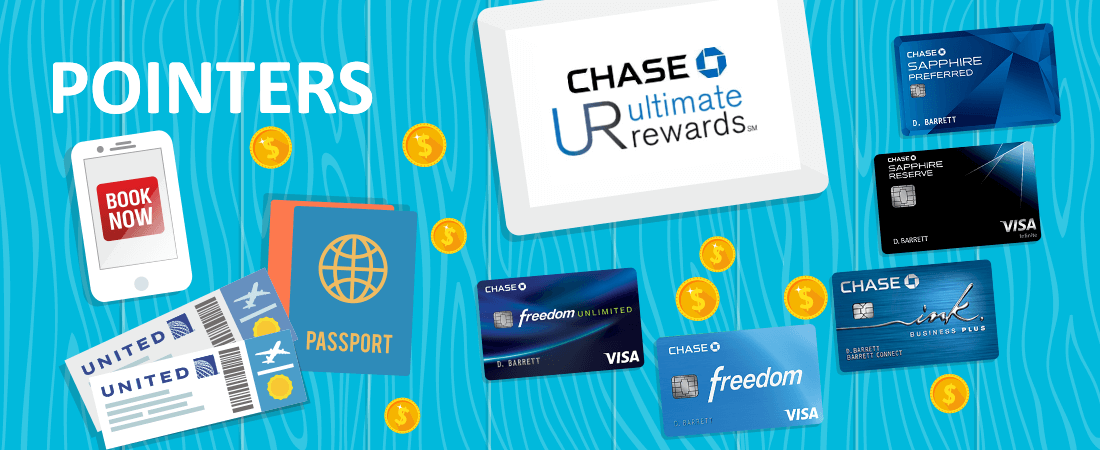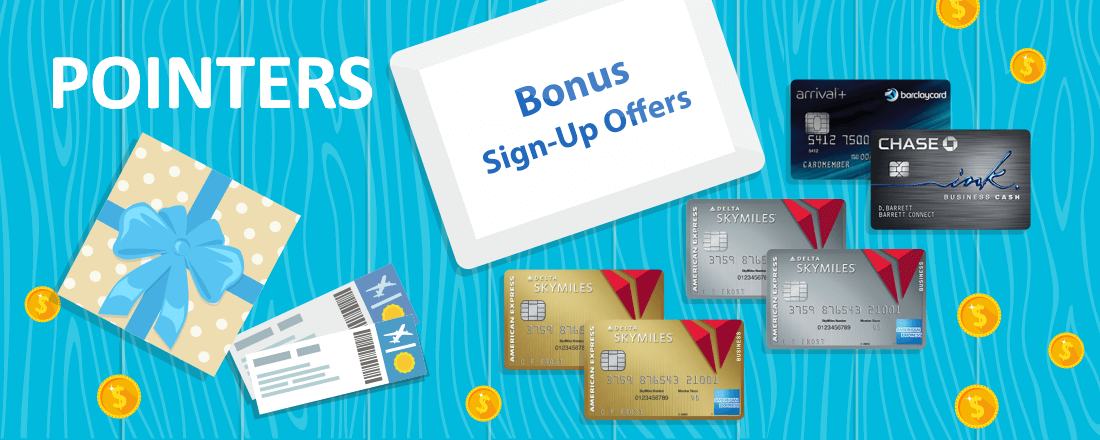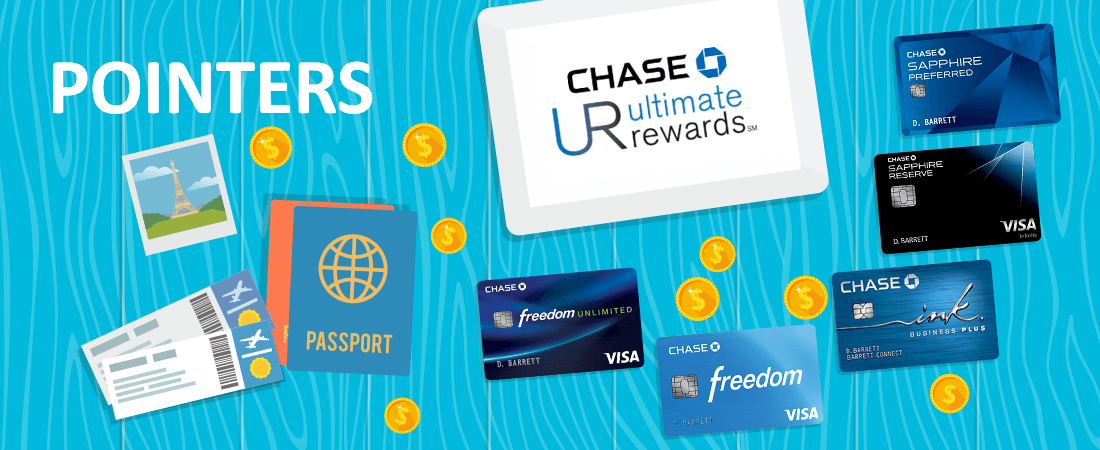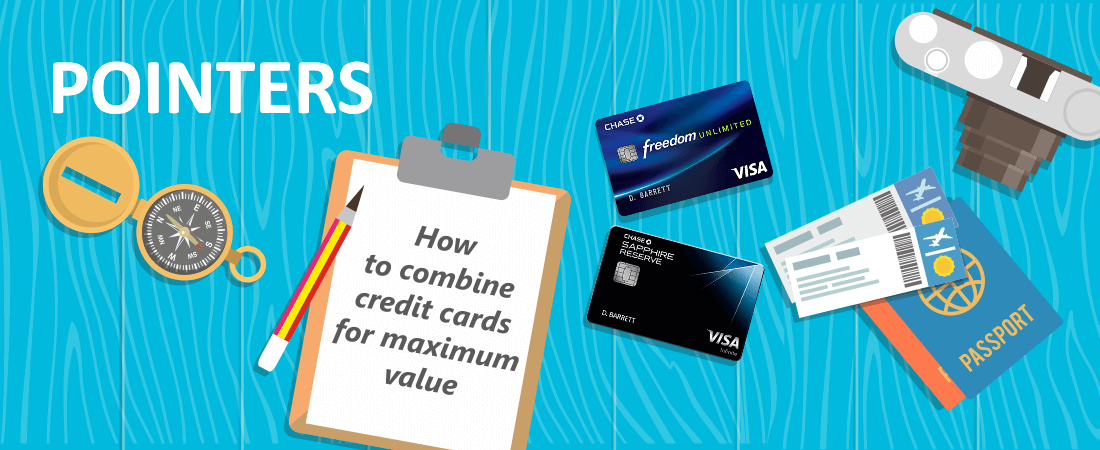Much to the delight of frequent travelers, Chase keeps releasing Ultimate Rewards credit cards. And the bank has unveiled a new addition to the lineup of
New Ink Business Unlimited Credit Card by Chase – 1.5% Cash Back on Everything
10 Reasons to Book Flights Using Chase Ultimate Rewards Points
Those who hold a Chase Ultimate Rewards-earning credit card know the value of these precious rewards points. The flexibility to transfer the points to partner hotel and airline loyalty programs allows you to
Chase Implements Major Restrictions on the Sapphire Family of Cards
Chase continues to make it more difficult to get approved for new credit cards and earns large sums of points with sign up bonuses. By now, many are familiar with the 5/24 rule, in which Chase will automatically reject applications for most of their cards if you have opened five or more new credit card accounts with any bank within the last 24 months.
Now, Chase has come out with a new rule, targeted at the Sapphire family of cards. There are three cards in the Sapphire family: the no annual fee Sapphire card, Sapphire Preferred, and Sapphire Reserve. Here are the new rules per a memo sent to Chase bankers:
Should You Get the Chase Sapphire Reserve?
It’s hard to believe it has already been a year since Chase announced the release of the Chase Sapphire Reserve®. This card and its promotional 100,000-point sign-up bonus sent shockwaves around the travel blogosphere.
For those who signed up for the card or are thinking about getting it, you may be wondering if it’s worth the hefty $450 annual fee. Let’s take a look.
Could Chase Devalue Ultimate Rewards and How to Protect Your Points
Chase recently sent out a survey to selected cardholders to gauge opinions on several potential negative changes that could be made to the Ultimate Rewards program and its associated credit cards. While no changes are imminent, this survey could give us some insight into what may occur in the future. Since program devaluations are a constant source of risk in the travel rewards game, it helps to consider which opportunities currently provide outsized value that may be ripe for devaluation.
Chase 5/24 Rule – Exceptions, Application Tips and More
Chase makes great credit cards. The Sapphire Reserve and Preferred top just about everyone’s
If you’re thinking about getting a Chase card, I’ve got you covered. Below is everything you need to know about the 5/24 rule. And if you’re looking for good alternatives to Chase cards, check out these suggestions.
What Is the Chase 5/24 Rule?
Simply put, Chase will not approve you for a card if you’ve opened five or more new card accounts across all banks in the last 24 months. They introduced this rule several years ago to prevent card churning.
In other words, they don’t want you to get a bunch of credit cards just for the welcome bonuses.
The Bad News: All personal credit cards from any bank count toward your total open accounts. You can’t get around the 5/24 rule just by getting non-Chase cards.
The Good News: Some credit cards don’t count toward the 5/24 rule. There are exceptions! Don’t worry, I’ll cover those later.
It’s worth pointing out that you can still
What’s the Big Deal About This Rule?
The list of Chase cards you can’t get if you’ve opened five accounts in the last two years is long. If these cards are out of your reach, you’re missing out. That’s why it’s important to understand the 5/24 rule.
These cards are subjected to the 5/24 rule:
- Ultimate Rewards Credit Cards:
- Chase Sapphire Preferred® Credit Card
- Chase Sapphire Reserve® Credit Card
- Chase Freedom (expired offer)
- Chase Freedom Unlimited® Credit Card
- Chase Freedom Flex® Credit Card
- Chase Freedom Rise® Credit card
- Business Ultimate Rewards Cards:
- Ink Business Preferred® Credit Card
- Ink Business Unlimited® Credit Card
- Ink Business Cash® Credit Card
- Ink Business Premier® Credit Card
- Southwest Credit Cards:
- Southwest Rapid Rewards® Plus Credit Card
- Southwest Rapid Rewards® Priority Credit Card
- Southwest Rapid Rewards® Premier Credit Card
- Southwest® Rapid Rewards® Performance Business Credit Card
- Southwest Rapid Rewards® Premier Business Credit Card
- United Airlines Credit Cards:
- United℠ Explorer Card
- United Quest℠ Card
- United Gateway℠ Card
- United Club℠ Infinite Card
- United Club℠ Infinite Card (former United MileagePlus Club)
- United℠ Business Card
- United MileagePlus Explorer Business (expired offer)
- United Club℠ Business Card (ex United MileagePlus Club Business)
- Marriott Credit Card:
- Marriott Rewards Premier Plus (expired offer)
- Marriott Bonvoy Boundless® Credit Card
- Marriott Bonvoy Bountiful® Credit Card
- Marriott Bonvoy Bold® Credit Card
- IHG Credit Cards
- IHG One Rewards Premier Credit Card
- IHG One Rewards Traveler Credit Card
- IHG One Rewards Premier Business Credit Card
- Disney Credit Cards
- Disney® Premier Visa® Card
- Disney® Visa® Card
- World of Hyatt Credit Cards
- World of Hyatt Credit Card
- World of Hyatt Business Credit Card
- Other Airlines Credit Cards
- Aer Lingus Visa Signature® Credit Card
- British Airways Visa Signature® Credit Card
- Iberia Visa Signature® Credit Card
- Aeroplan® Card
- Other Co-Branded Credit Cards
- Prime Visa
- DoorDash Rewards Mastercard®
- Instacart Mastercard®
When you can’t get these cards because of the 5/24 rule, here are some excellent alternatives.
Why You Want These Cards

There are a lot of reasons to want these cards. To start with, the Ultimate Rewards program is great and the points are valuable. The Sapphire cards in particular offer big intro bonuses worth hundreds of dollars. I couldn’t do without my Reserve card with its top-of-line perks:
- Free lounge access for me and a guest
- 50% bonus when redeeming through the Ultimate Rewards portal
- $300 travel credit annually
- Much, much more
Southwest Companion Pass
The Southwest cards are a must-have for domestic travelers for one reason: the fantastic Southwest Companion Pass. If you get two of the Southwest cards at the right time, you can get the pass with just the welcome bonuses. That’s how I’ve done it.
With the pass, you can take a family or friend with you for free on any Southwest flight. The pass can be used unlimited times and is good for up to two years!
I’ve saved thousands on family vacations with the pass. It’s simply the best deal in
New Marriott Bonvoy Cards!
The Marriott Bonvoy credit cards are brand new. As part of the upgrade, Marriott Bonvoy program now offers great welcome bonuses and other travel perks. Marriott’s reward program often flies under the radar, but it’s Hotel + Air Package deals are pretty great.
Today you can transfer Marriott points to 39 airline transfer partners at 3-to-1 ratio with most programs. Plus, you will bet a 5,000 miles bonus for every 60,000 points you transfer to frequent flier miles. Thus, with the transfer bonus, if you transfer 60,000 Bonvoy miles, you’ll get 25,000 miles in the airline frequent flyer program of your choice!
Most Bonvoy cards also come with a free night award on every card anniversary. But if you want to maximize your free night awards, the Marriott Bonvoy Boundless® Credit Card should be on your wish list.
If You’re Above 5/24
Keep in mind that those cards will count toward your 5/24 total. If you’re not worried about getting a Chase card (or already have the ones you want), then start applying for your next Amex, Citi, Capital One, Barclays or U.S. Bank card.
Otherwise, you might want to get a card that doesn’t count toward the total (more on this below).
Exceptions to the Chase 5/24 Rule

If you’re above 5/24 and you’re waiting it out to apply for a new Chase card, you can still earn intro bonuses. That’s because certain cards won’t show up on your credit report. They won’t count toward your total opened accounts, making them exceptions to the rule.
Which cards can you get? Just about any
That means you can get business cards from American Express, Bank of America, Citi and even Chase.
Yes, I said Chase. You will have to be below 5/24 to get a Chase business card, but it won’t contribute to your total number of new accounts for future applications.
With all those issuers, there are a lot of great options to tide you over until you can get another Chase card. Bank of America issues a great Alaska Airlines business card and, as I’m sure you know, American Express has a whole lineup of excellent business cards (including the Business Gold Rewards card and the Business Platinum card).
What About Barclays Business Cards?
There has been a lot of discussion about Barclays business cards. They issue business cards for JetBlue, Hawaiian Airlines and American Airlines, so it’s worth mentioning.
While most report that the cards don’t count, there are enough reports of them counting that I’d be wary of taking the chance unless I was okay with a hit to my 5/24 total. I personally haven’t applied for any of these cards for that very reason.
Almost Anyone Can Qualify for a Business Card
You might be thinking that you’d like to get one of those small business cards but you don’t run a business. You might be surprised at how easy it is to qualify for one of these cards.
If you’re like me, you probably sell some of your old stuff on eBay from time to time. If you do that a few times a year and make a few bucks, guess what? You’re a business owner. You can get a
There is several ways to qualify. Do you do a little freelancing on the side? That counts. What about a small crafts business? Or maybe a little neighborhood landscaping? It might be worth selling a few things on Etsy or Ebay just get access to these cards. Think about it.
Don’t Become an Authorized User
Becoming an authorized user on someone else’s card will look like an open account on your credit report. In other words, Chase will see it and might deny you when considering your application.
I’d avoid becoming an authorized user for this reason, but you can always call Chase and explain the situation. They may reconsider your application. I don’t think it’s worth the risk, though.
Avoid Store Cards, Too

Store cards that are part of major payment systems like
So skip that Gap card next time the sales clerk propositions you during check out.
Can I Upgrade My Card?
Upgrading or downgrading your card within the same lineup shouldn’t count as a new card account. For example, if you decide to upgrade from the Gold Delta SkyMiles card to the Platinum SkyMiles card, you should be okay.
Though unusual, some issuers will do a hard pull on your account for upgrades. If there’s a hard pull, it will appear on your credit report and Chase will likely consider it a new account. So ask the issuer if they plan to do a hard pull on your credit before you upgrade or downgrade your card.
What Counts
To sum up, these cards add to your 5/24 total:
- All personal credit and charge cards
- Business cards issued by Capital One or TD Bank
- All store credit cards
What Doesn’t Count
These actions won’t impact your chances of getting a Chase card:
- Getting a business card issued by Citi, American Express, Bank of America and Chase (Barclays business cards might count)
- Upgrading or downgrading your card (but consult the issuer to be sure)
Are There Ways to Get Around the 5/24 Rule?
Chase keeps tightening the rules. There used to be a few ways to get a Chase card even if you had opened five (or more) accounts in two years. The most popular of these methods was applying after getting a pre-qualified or other special offer directly from Chase. But that doesn’t work anymore.
In-Branch Offers
A few readers have reported in the past that they’ve been able to go directly into a Chase branch with one of these special offers and get approved. This won’t work now.
Asking to be pre-approved, even in a branch location, often results in the agent checking online, which will trigger the rule. They’ll know you’re over, and you won’t get a card.
If you take a chance and give this strategy a try, Chase might decide to close all of your accounts because you’ve ‘cheated’ the rules. Is it really worth it?
Targeted Offers
If you get a targeted offer online, in an email or via old-fashioned snail mail, you may still have a chance of getting a card even if you’re over the 5/24 limit. Of course, there’s no guarantee that this will work. Be sure to use your personalized invitation code, if you got one with the offer.
Call the Reconsideration Line
It’s possible that Chase made a mistake! If you’ve been denied but you don’t think you’re over the 5/24 limit, don’t be afraid to call the Chase reconsideration line.
Be sure to ask for the reasons that you’ve been denied. It’s possible that they included a card that you’re just an authorized user on by accident or have made some other error.
How to Track Your 5/24 Status
Whether you’re waiting for a card to drop off your report so you can get a new Chase card or your just not sure how many accounts you’ve opened in the last couple of years, there’s an easy way to check.
All you need to do is to take a look at your credit report. There are a variety of places that allow you to do that for free, including Credit Karma and Experian.
Once you have access to your report, just look for accounts that have been opened in the last 24 months. They should be easy to find.
While you’re looking at your report, it’s always a good idea to check it over for any errors. Make sure all of the accounts (including mortgages and car loans) are yours, and that all of your payments are current.
If you find any errors (it happens more often than you think!) report it immediately to the credit bureau that issued the credit report.
There’s No Escape!
Chase’s 5/24 rule is here to stay. You can’t escape it. Chase has even tightened the rules over time.
So it’s important to know what does and doesn’t count before you apply for a new Chase card. Check your credit report and make sure Chase won’t turn you away. There’s nothing worse than a denied application and taking a hit to your credit score for no reason.
And if you are over five new accounts in the last two years, you might want to hold off on that new card. Unless, of course, you’ve been following along and know the exceptions to the 5/24 rule. I know I’m looking forward to the day I can apply for another Chase card or two. But if you’ve given up on getting more Chase cards in the near future, there are some
How to Use Chase Ultimate Rewards or Citi ThankYou Programs to fly Delta
Transferring points from credit card rewards programs, such as Chase Ultimate Rewards, Citi ThankYou, or American Express Membership Rewards is a great way to fly on their partner airlines, but that’s just the beginning. Since so many airlines are members of airline alliances (and those that aren’t can partner with other airlines in ways you wouldn’t expect), it feels sometimes that you can use points to fly on almost every one of them.
How to Use Amex Membership Rewards, Citi ThankYou Points and Chase Ultimate Rewards to Fly American Airlines
United is a transfer partner of Chase Ultimate Rewards, and Delta is a partner of American Express Membership Rewards, but you won’t find American Airlines in the transfer partners list of major credit card rewards programs. That, however, doesn’t mean you can’t fly American using the points from these programs and Citi’s ThankYou program.
Booking An Around-the-World Trip Using Chase Ultimate Rewards
Chase Ultimate Rewards is one of the most valuable credit card rewards programs available today. Chase offers several business and personal credit cards that allow you to earn these points, which can be redeemed directly for travel reservations using the Chase Ultimate Rewards travel center. But the best feature of this program is the ability to transfer points to miles in seven different frequent flyer programs and four hotel programs.
Talking Travel Rewards Credit Cards with Astronauts Mark and Scott Kelly
If you had a chance to meet two of the world’s most famous astronauts, what would you talk about? On the Thursday before the Super Bowl last month, I was invited to attend the NFL Player’s Association VIP party at the Museum of Fine Arts in Houston. Among the hundreds of attendees were dozens of current and former players, who easily stood out because of their size.
How to Use Chase Ultimate Rewards or Citi ThankYou to Fly Delta
Delta is a transfer partner of the American Express Membership Rewards program, but it is not a partner of either Chase Ultimate Rewards or Citi ThankYou. You can still use TY or UR points to fly on the airline though by booking the carrier through a partner airlines. We will show you how.
Using Chase Ultimate Rewards for a Round the World Trip in Business Class
Chase Ultimate Rewards is one of the most valuable credit card rewards programs around. Chase offers several
New Travel Credit Cards Introduced in 2016
Chase introduced some exciting new Ultimate Rewards credit cards last year, including the buzzworthy Sapphire Reserve, a new Ink business card and a second no-fee Freedom card. A few airlines got in the act last year, too. There’s a new and improved offering from Asiana Airlines, as well as a completely new lineup from Central America’s Avianca and an excellent opportunity for small business owners from Hawaiian Airlines.
Is the Chase Sapphire Reserve Still Worth It With a Lower Sign-Up Bonus?
Last August, Chase made a big splash by introducing the Chase Sapphire Reserve, a brand new card with top-of-the-line benefits as well as an attractive 100,000-point signup bonus. As you may have heard, that signup bonus was recently lowered from 100,000 Ultimate Reward points to 50,000 as of March 12.
Best and Worst Chase Ultimate Rewards Redemptions: British Airways
British Airways Executive Club is a great program that can really stretch the value of your Ultimate Rewards points. Since BA is an airline partner of UR you can transfer points to Execuive Club, the airline’s frequent flyer program. While British Airways is not a U.S. airline, you can use Avios to fly on its partner airlines, which include American or Alaska.
Also, unlike most U.S. based airline programs, British Airways Executive Club is a distance-based program, and it works best on relatively short, non-stop flights. Redemption levels start at 7,500 Avios per one-way flight (15,000 roundtip) in the U.S. and 4,000 Avios (8,000 roundtip) elsewhere.
Ultimate Rewards to British Airways: Best Redemptions
Short flights in the U.S.
Nonstop flights for distances up to 1,150 miles in the U.S. are priced at 7,500 Avios one way, which is a much better rate than reduced United flights priced at 10,000 miles for distanced up to 700 miles. The next level is 10,000 Avios for distances between 1,151 and 2,000 miles.
1) For travel originated or terminated in the U.S., consider transferring your Ultimate Rewards points to BAEC if:
- You hold a Sapphire Preferred card and your desired roundtrip ticket costs $187.50 or more on the Ultimate Rewards site or
- You hold a Sapphire Reserve card and your roundtrip ticket costs $225 or more on the Ultimate Rewards site.
2) For travel not originating or terminating in the U.S., consider transferring your Ultimate Rewards points to BAEC if:
- You hold a Sapphire Preferred card and your desired roundtrip ticket costs $112.50 or more on the Ultimate Rewards site or
- You hold a Sapphire Reserve card and your roundtrip ticket costs $135 or more on the Ultimate Rewards site
For better understanding of this valuation, read the Best and Worst Examples of Using Chase Ultimate Rewards Points – The Portal.
A few examples of flights under 1,150 miles are: NYC – Miami, Toronto/Montreal, Washington, Chicago or Bermuda or Los Angeles to Seattle on the West Coast. You can find the distance between cities with this free tool.
West Coast to Hawaii on Alaska or American
Flights between the continental U.S. and Hawaii cost 22,500 one way, but the West Coast lies well within a 3,000-mile distance from Honolulu, so if you transfer your Ultimate Rewards points to BAEC, you can fly between the West Coast and Honolulu on American or Alaska for 12,500 Avios or 25,000 per roundtrip.
Boston to Dublin on Aer Lingus
One of the most amazing Ultimate Rewards values is redeeming Avios between Boston and Dublin on a British partner Aer Lingus for 25,000 per roundtrip. Even a business class ticket (redeeming Avios for business class tickets are not usually recommended) for 75,000 Avios per roundtrip is a good deal compared to United’s 100,000 miles price tag.
Northeast to Western Europe on Airberlin or Iberia
Transfer your Ultimate Rewards points to BAEC and fly from New York to Berlin/Dusseldorf for 40,000 Avios on Air Berlin (per roundtrip), or to Madrid for 34,000 Avios on Iberia. United charges 60,000 miles for flights between the U.S. and Europe.
London to Europe on BA
We generally discourage people from using Avios to fly British Airways over the ocean due to high fuel surcharges, but short- and medium-haul flights between London and Continental Europe can be a real bargain. The fees on intra-Europe BA flights are capped at £35 (which is slightly above $45 with current exchange rates), so you can connect anywhere in Europe for cheap. You can fly to Marseilles or Copenhagen for 9,000 Avios per roundtrip, Rome, Ibiza and Budapest for 15,000 Avios, or Moscow, Athens and Istanbul for 20,000.
Save even more by flying BA off-peak
British Airways has discounts if you don’t mind flying off-peak with them. Your savings for short-to-medium-haul one-way flights are as follows:
- 4,000 Avios vs. 4,500 for Zone 1
- 6,500 Avios vs. 7,500 for Zone 2
- 8,500 Avios vs. 10,000 for Zone 3
- 10,000 Avios vs. 12,500 for Zone 4
Intra-South America on LAN/TAM
Intra-South American flights can be prohibitively expensive; a one-hour flight between Lima and Cuzco (a gateway to Machu Picchu) can cost hundreds of dollars. However, the same flight can be yours for 4,500 Avios one way. Same 4,500 Avios can get you between other popular cities, for example, Sao Paulo and Iguassu Falls or Rio and Florianopolis. Or you can fly from Buenos Aires to Santiago de Chile for 7,500 one way.
Intra-Australia flights on Qantas
Qantas holds a virtual monopoly on intra-Australia flights, so it shouldn’t come as a surprise that a 1.5- hour flight between Sydney and Melbourne can cost $300-400 sometimes. Instead, transfer you Ultimate Rewards points to BAEC and book the same flight for 4,500 Avios and a few dollars of taxes.
Sydney – Auckland on LAN
This is a rare instance when we can recommend paying slightly more for a business class flight. This route is served by South American LAN on the way to/from Santiago and features Premium Business class with lie-flat seats. This 3.5 hour flight will cost you 20,000 Avios in business or 10,000 Avios in economy (one way).

Intra-Asia on Cathay Pacific and intra-Japan on JAL
You can fly from Hong Kong to Hanoi or Taipei for 4,500 Avios and to Chiang Mai or Siem Reap for 7,500 Avios one way. You can also use other oneworld partners Malaysia and SriLankan, but both add some fuel surcharges to their award tickets. Or you can redeem 4,500 Avios for any intra-Japan one-way flight on JAL from Tokyo – be it to Fukuoka in the South or Sapporo in the North.
Ultimate Rewards to British Airways: Worst Redemptions
This list is amazingly short.
Avoid connecting flights
The way Executive Club is designed is that any extra segment adds costs. So if there isn’t a non-stop flight or if you can’t find a nonstop availability, the system will usually (although not always) charge you for two segments instead of one.

For example, the flying distance between New York and Tampa, is just a hair above 1,000 miles which means it would cost 7,500 Avios per one-way flight if there was a non-stop flight between these two cities on American. Unfortunately, there isn’t, so when the computer routes your flight via Miami or Washington, DC, it adds an extra segment, meaning that you end up paying 15,000 Avios instead of 7,500. That makes transferring to United or booking your trip with Ultimate Rewards points a better option.
Once again, this is not always the case, so try to price your itinerary on the British Airways website first.
Avoid redeeming Avios for premium class travel
With some exceptions, using Avios to book first, or even business class is rarely a good deal. The BAEC scheme operates with a premise of a four-class configuration.
- Economy
- Premium Economy
- Business
- First
So if an economy seat costs 4,500 Avios, then a premium economy seat is 6,750, which is 50 percent more; a business class seat is 9,000, which is twice as much as a seat in economy; and a first class seat is 18,000 Avios, which is twice as much as a seat in business.
While redeeming Avios for a business class seat may be a decent value (like our Boston-Dublin and Auckland-Sydney examples), in general, the best value of the BAEC program is in short trip redemptions. There just isn’t much value in spending a lot of points for a two to three-hour flight. If you’re interested in business or first, save your Ultimate Rewards points for another day and transfer them into a program providing a much better value for long-haul premium class travel.
Chase Ultimate Rewards: Best and Worst United MileagePlus Redemptions
United is arguably the most popular Chase airline transfer partner, and transferring Ultimate Rewards points to United often makes sense when the price in points on the Ultimate Rewards website is too high compare to what you could pay for the flight using alternative currencies —
Our Top Picks for October: Credit Cards With Bigger Than Usual Sign-Up Bonuses
Using Chase Ultimate Rewards Points: Best and Worst Uses Through the Booking Portal
Chase Ultimate Rewards is a great program with many fans. Just like the American Express Membership Rewards and Citi ThankYou programs, Ultimate Rewards offer multiple ways to redeem points. It is the only program that allows easy cash redemption at 100:1, but it mostly shines on travel redemptions.
If you
Best Credit Card Combos: Chase Freedom Unlimited and Sapphire Reserve
The Chase Freedom Unlimited card and the Chase Sapphire Reserve card is quite possibly the best credit card combination in the entire travel rewards industry. The combined benefits of this combo provide just about everything a travel hacker could want in their credit card portfolio – high
In addition, the ability to get so much out of only 2 cards allows travelers to simplify their wallets and reduce the cost of the annual fees they pay relative to a traveler who carries many cards. The Freedom Unlimited card has
Which Chase Ultimate Rewards Cards Are Worth Holding Long Term?
With so many good travel credit cards on the market, it can sometimes be difficult to decide which ones to keep in your wallet long-term. If you keep too many, you will end up paying a significant amount of money in annual fees which may end up costing you more than the value you receive from these cards. On the other hand, if you cancel a card and later decide you would like to have it again, you may be prevented from getting that card again due to Chase’s much-maligned 5/24 rule.


